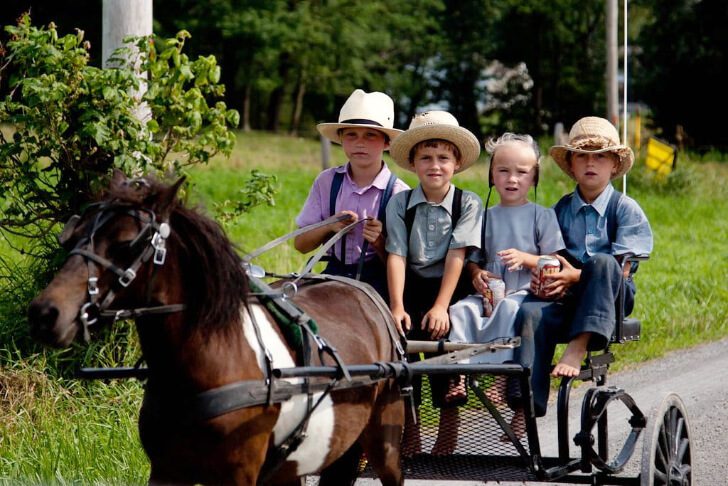
In a world where upgrading your phone is practically a sport, it’s refreshing to think about a group that thrives on simplicity. Enter the Amish—masters of minimalism, living without the tech overload and clutter that most of us can’t imagine life without. They’re not just about wooden barns and hand-stitched quilts; their secret to financial peace lies in living with intention.
By focusing on community, sustainability, and self-sufficiency, the Amish prove that saving money isn’t about squeezing every penny—it's about living in balance. So, what can we learn from their approach? Turns out quite a lot!
The Amish Power of Simple Living
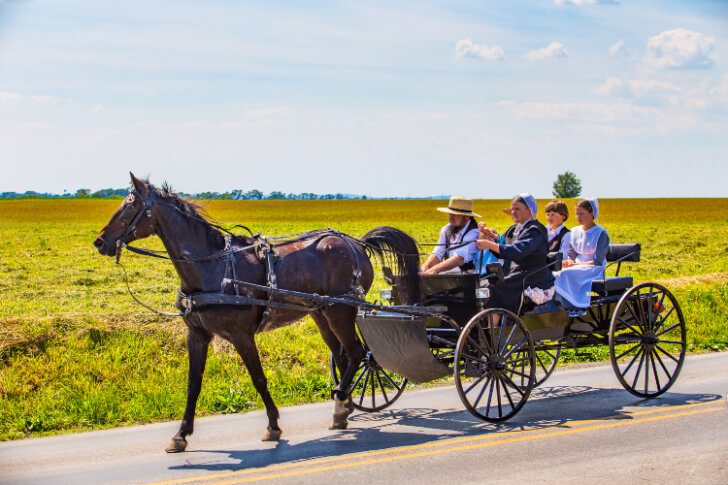
The Amish, whose roots date back to Switzerland in the 1600s, are known for their profound commitment to simple living. Forget smartphones and flashy cars—these folks are all about hard work, self-sufficiency, and sticking to their time-honored traditions.
As a closed community, they keep to themselves, relying on each other rather than outside help. This means they’re experts in sustainability and making do with what they have, cutting out unnecessary expenses in the process. While we might not be ready to give modern conveniences, the Amish offer a surprising lesson: save money by focusing on the essentials and letting go of what doesn’t serve you.
Making Off-Grid Living Look Cool
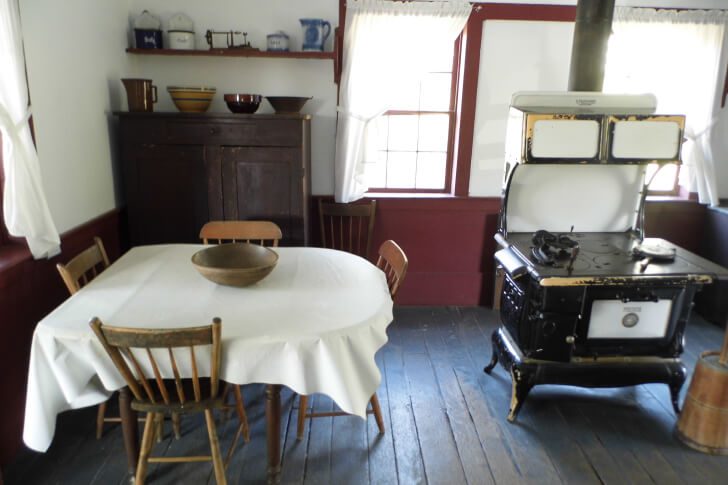
In most Amish Mennonite homes, electricity is as taboo as a selfie stick at a barn-raising. They go off-grid, keeping things refreshingly low-tech and (surprisingly) chill. While this means fewer bills to pay—score!—it doesn’t necessarily mean they’re living in total darkness. Instead, they light up their evenings with kerosene lamps that give off a cozy, nostalgic glow, as if every night’s a candlelit dinner.
Gas-powered refrigerators keep their milk cold sans the electric hum we’re so used to hearing. Of course, they’re not entirely against electricity—they use it for emergencies or when it’s necessary. Talk about using power wisely!
Rocking Chin Beards, Ditching Mustaches

If you've ever wondered why Amish men sport that signature long chin beards without mustaches, it’s all about tradition—and a little bit of rebellion. This look goes back to the 1800s when Amish men wanted to set themselves apart from the military (and facial hair trends of the time).
Back then, mustaches were seen as a sign of military service, so the Amish ditched them to avoid any connection with the “outside world.” Instead, they kept the chin beard as a symbol of maturity and manliness. So, no mustache? No problem. They’ve turned it into a timeless style statement—and a practical one, too.
Totally Unbothered by Tech FOMO

The rest of the world is scrambling to keep up with the latest tech craze, but the Amish are basically living in the “no thanks” zone. For them, tech is a tool, not a lifestyle. They use phones and computers strictly for business—no scrolling through TikToks or checking Instagram feeds here.
Gadgets are kept far from their homes, in barns or workspaces, ensuring that they’re not distracted by the endless noise of the digital world. The Amish are living proof that you can get by just fine without knowing the latest iPhone specs or which streaming service just dropped a new show.
Skipping the Credit Card Drama
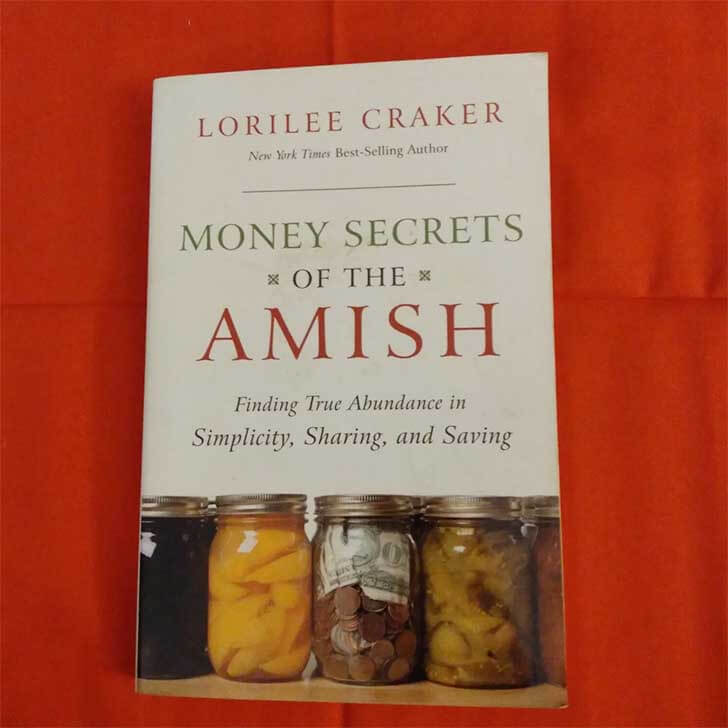
While Americans are swimming in over $1 trillion of credit card debt (yikes), the Amish are over here giving us a masterclass in financial restraint. For the Amish, debt isn't just something to avoid—it’s practically a four-letter word.
They’ve built their way of life around the idea of living within their means, and if they can’t afford something, they don’t buy it. Simple as that. No impulse buys, no "charge it" mentality. They prefer to save up for what they need and stick to the basics. While the rest of us are stressing over maxed-out cards, the Amish are quietly living debt-free.
Loans Are Almost as Rare as Unicorns

The Amish are about as cautious as a squirrel crossing a busy street when it comes to loans. They don’t just take out loans for any old reason; they make sure they can afford it first. If they ever do need to borrow money, they go to local, community-based lenders—often avoiding big banks.
The Amish are known for their reputation as reliable, low-risk borrowers. After all, they live by the “pay as you go” rule, so they’re not likely to default on a loan. It’s no wonder banks love them! They are quietly managing their finances, one low-risk loan at a time.
Masters of Bartering and Bargains
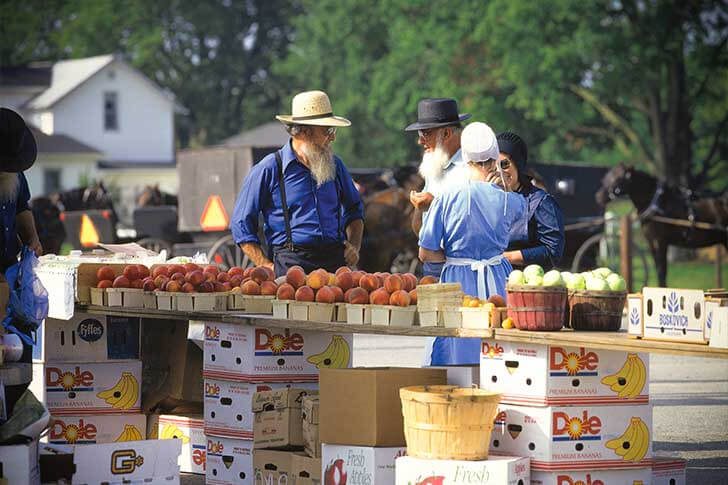
Forget price tags and checkout lines—the Amish have mastered the art of bartering. At local farmer’s markets or roadside stands, you’ll find a refreshing old-school trade system where goods are exchanged for what they’re worth, not what the sticker says. Need fresh eggs? Trade a loaf of homemade bread. Want some hand-carved furniture? Offer up a basket of apples.
It’s a system that adds value not just in dollars but in skills, craftsmanship, and community support. These folks don’t just buy and sell; they build relationships with every deal. Because, truly, a handshake and a good trade can sometimes be worth more than a shiny receipt.
The Amish Invest in Each Other

In the Amish community, wealth isn’t just about what’s in your pocket; it’s about how you share it. The wealthier members often play the role of financial superheroes, offering low-interest loans to young adults ready to start a farm or build a home. No flashy contracts or bank paperwork here, only a commitment to long-term community growth.
It’s a system where everyone has a stake in each other’s success. Instead of hoarding wealth, they invest in the future by giving young families the resources to thrive. So, forget the “me-first” mindset; these folks know that a bit of help today can lead to lots of success tomorrow.
Kids Play with Faceless Dolls

If you ever wander through an Amish shop, you might spot a faceless doll that looks like something out of a ghost story but in a totally charming way. These dolls, popular with children, have no faces. It might sound spooky at first, but there’s a sweet reason behind it: they encourage imagination and creativity.
Without a face to define them, kids are free to create their own stories, personalities, and adventures for the doll. There are no pre-determined narratives, no marketing gimmicks—just pure, unfiltered playtime for Amish children to learn the art of creativity with a blank canvas of a doll.
Fun Through Nature and Community Time
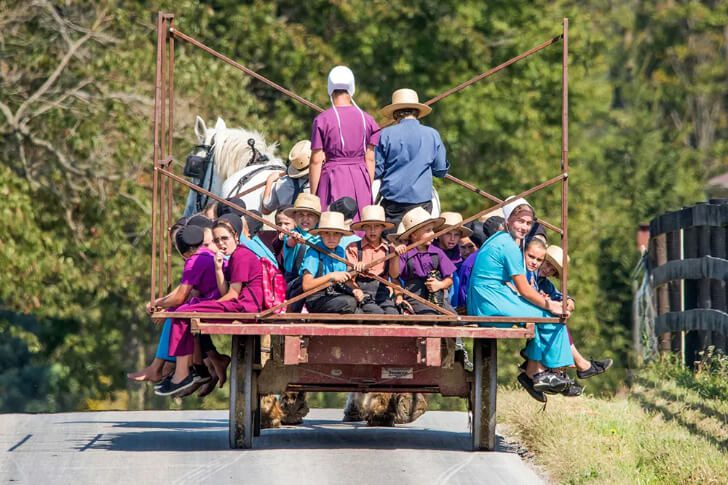
For the Amish, fun doesn’t come in the form of video games or Netflix binges—it’s all about connecting with nature and each other. Think of a hike through scenic trails or a good old-fashioned hunting trip. No need for fancy gadgets or high-tech gear, just a pair of boots, some fresh air, and good company.
It’s the recreation that gets you out of the house, moving and bonding with those around you. As the world is busy trying to one-up each other with the latest trends, the Amish are out there enjoying the simplicity of a trail walk or a quiet afternoon in nature. Now that’s how you recharge!
Kids are Basically Multilingual Superstars

Amish kids have a linguistic secret: by the time they’re school-age, they’ve already mastered three languages. First, there’s Pennsylvania Dutch, the language of everyday life used for chatting with family and friends. Then, they learn High German for church services because regular church sermons aren’t complicated enough!
Finally, they pick up English, just in case they ever need to chat with non-Amish folks or navigate the outside world. It’s like a mini-language immersion program—but way cooler. Here, we are struggling with a single second language (if we even have one), and Amish children are juggling three without breaking a sweat. That’s some serious brainpower!
The Ultimate Life Manual
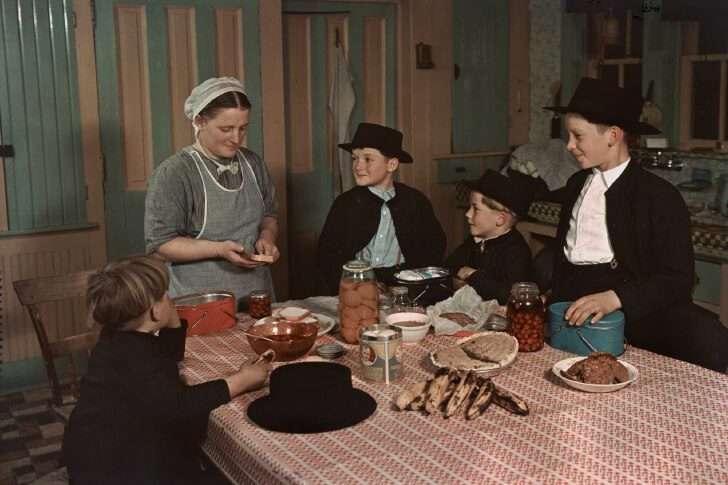
Amish life isn’t just about living off the land and avoiding high-tech distractions—it’s all about following the Ordnung. Think of it like their very own rulebook for life, covering everything from what to wear to how to handle finances. The word “Ordnung” translates to “order” or “discipline” in German, and that’s precisely what it provides: a structured, orderly way of living.
It’s more than a set of guidelines; it’s a comprehensive list of expectations that touches on nearly every aspect of daily life. The Amish are sticking to a blueprint that’s kept them grounded and connected for generations. Who needs a life coach when you’ve got the Ordnung?
Shunning is Taken Seriously

These people have a particular way of handling situations when someone steps out of line, and it’s not just a quiet conversation or a warning. Enter "Meidung," the ultimate consequence—shunning. This is no joke. If an Amish member breaks a central rule or goes against the community's values, they may find themselves shunned.
This means no social interactions and community events and, essentially, a life on the outside looking in. It’s a serious penalty that encourages everyone to stay in harmony with the group. So, before anyone thinks about skipping Sunday service, they might want to remember that "Meidung" is just one bad decision away!
Fashion Game That's All About Simplicity
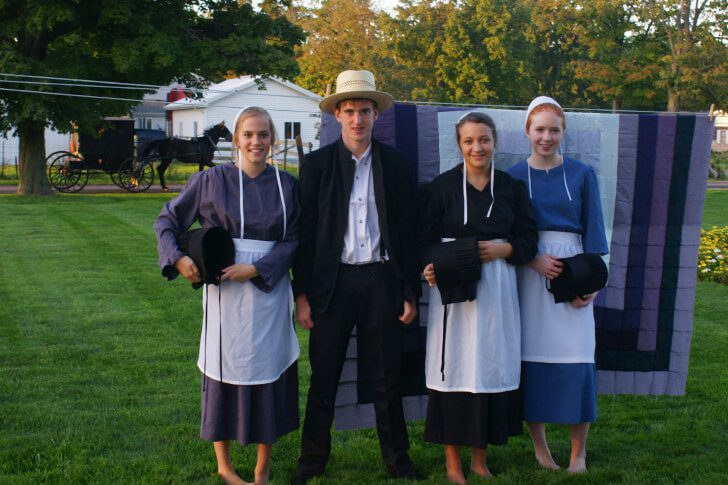
Forget trying to keep up with the latest fashion trends—these folks have a dress code that is all about keeping it simple and sticking to tradition. Women wear plain dresses, men rock black pants with straightforward shirts, and don’t even think about adding flashy jewelry or makeup to the mix.
The Amish aren’t about being seen; they’re about being part of the community. They are living proof that less really is more. They’ve got the entire minimalist, “I’m comfortable and grounded” vibe nailed down. So, if you ever want to skip the wardrobe drama, just take a page from the Amish playbook.
Potlucks Are the Ultimate Social Event
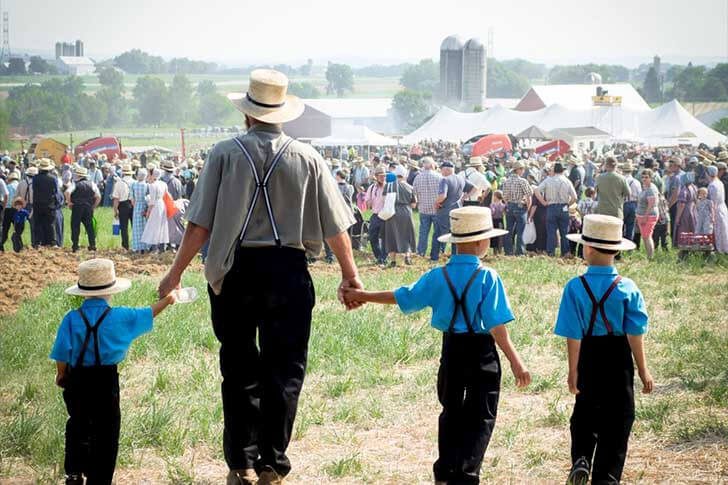
Amish folks know how to throw a party—and it doesn’t require an expensive venue or fancy gadgets. Potlucks, family gatherings, and seasonal festivals are their go-to ways to bring everyone together. Elders tell stories that have been passed down for generations, kids run around laughing, and teens connect in ways that no app or social media account could replicate.
It’s a celebration of community, where the cost is low, but the value is sky-high. These events strengthen bonds and create memories without the need for high-tech distractions or pricey entertainment. For the Amish, gathering isn’t just a fun pastime—it’s a cornerstone of their culture.
Peak Saving Pros
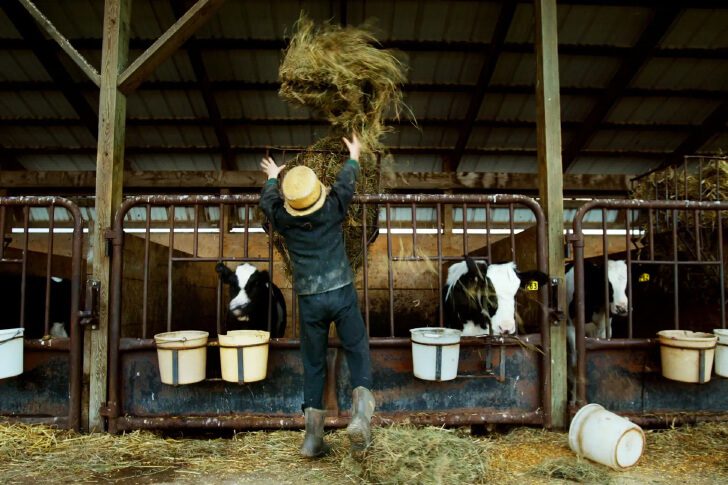
Saving money isn’t just something the Amish do—they’ve turned it into an art form. While the average American saves around six percent of their income, the Amish save a solid 20 percent. Take one Amish farmer in Bird-In-Hand, Pennsylvania, for example. He raised 14 kids, rented a farm, and still managed to save $400K over two decades.
They don’t splurge on the latest gadgets or impulse buys, and they’re not looking to impress anyone with flashy spending. They focus on what matters—living simply and saving diligently. So, if you ever need inspiration for your savings plan, look to the Amish for a no-nonsense approach to growing your financial peace.
The Secret to Timeless Craftsmanship
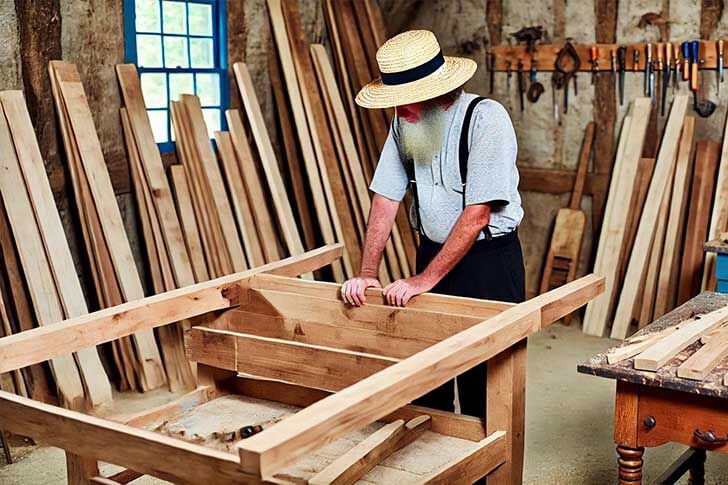
Whether it’s woodworking, metal manufacturing, or construction, their skills go far beyond farming and milking cows; the Amish have shown that they are masters of the craftsmanship trade. The artisans of this religious community create everything from beautifully crafted furniture to sturdy homes and intricate metalwork that could easily stand up to high-end store products.
Here’s the kicker: despite their expertise, much of what they make isn’t even allowed inside their own homes! It’s ironic because the same handmade goods the Amish don’t use are in high demand all over the world and are prized for their durability and quality.
Winning at Small Business
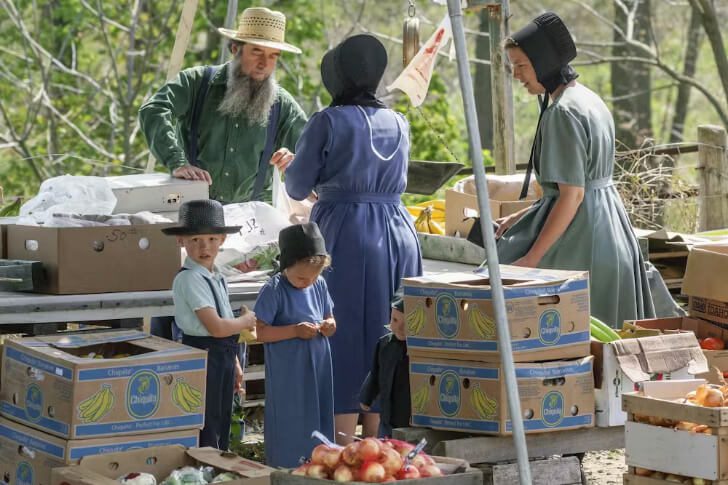
Businesses are kind of a big deal in their world of entrepreneurship—so much so that they have a 95 percent survival rate after five years, compared to the 50 percent chance most American small businesses face. So, what’s their secret sauce? It’s simple: teamwork.
Amish business owners don’t sit in the office giving orders—they roll up their sleeves and work right alongside their “English” employees. This hands-on approach creates a collaborative environment where everyone feels valued and part of the process. There are no fancy management techniques or endless board meetings. It turns out a little elbow grease and mutual respect might just be the best business strategy around.
Going for Bulk Grocery Shopping

Feeding a family in Amish culture isn’t your average trip to the local grocery store—it’s more like stocking up for an entire village. With an average of seven kids per household, grocery shopping is all about buying in bulk. We're talking sacks of flour, barrels of oats, and every other pantry staple in massive quantities.
Amish stores cater to these big families, making it easy to stock up without having to make constant trips to town. Forget grabbing a carton of eggs and a loaf of bread. Amish shopping trips are about prepping for the long haul, and it's a system that works.
Turning Waste Into Something Wonderful

They have a knack for finding new life in just about everything. Leftover food? It’s not going in the trash—it’s feeding farm animals or supporting local farmers. Clothes that no longer fit don’t go to a landfill either. Instead, they get passed down through the family, keeping them in circulation as long as possible.
When garments finally meet their end, they’re not tossed out; they’re turned into colorful strips and woven into handmade rugs. It’s a brilliant way to create something new from something old, proving that the Amish have been ahead of the curve in sustainability and reusing resources. Talk about making the most out of every single thing!
Thrift Shopping is an Art Form
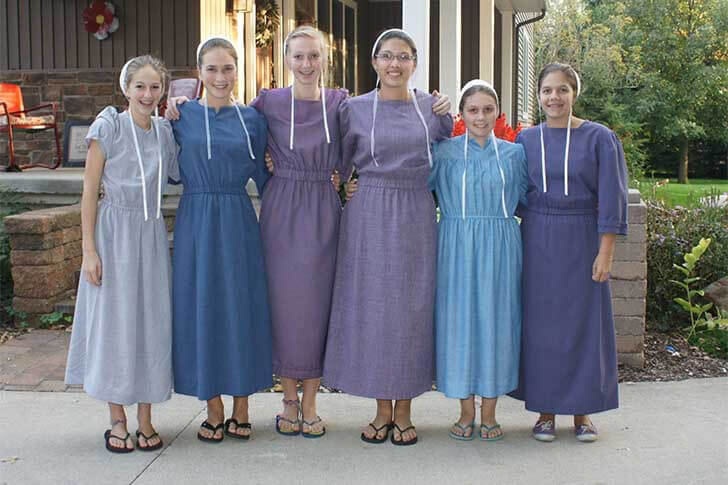
Feeding a big Amish family is no small task, but dressing them? Now, that’s a whole other level of skill. Forget trendy thrift shopping; they've been perfecting the art of secondhand shopping for generations. They embrace hand-me-downs, garage sales, and local community exchanges like pros. It’s all about finding affordable, durable clothes that meet their modest standards.
Their thrift stores are full of practical options, making sure no item goes to waste. For them, the concept of "reusing" is a way of life. So, the next time someone brags about scoring a vintage find, just remember: the Amish have been doing it better, longer, and with way more style.
Farm-to-Table Before It Was Trendy
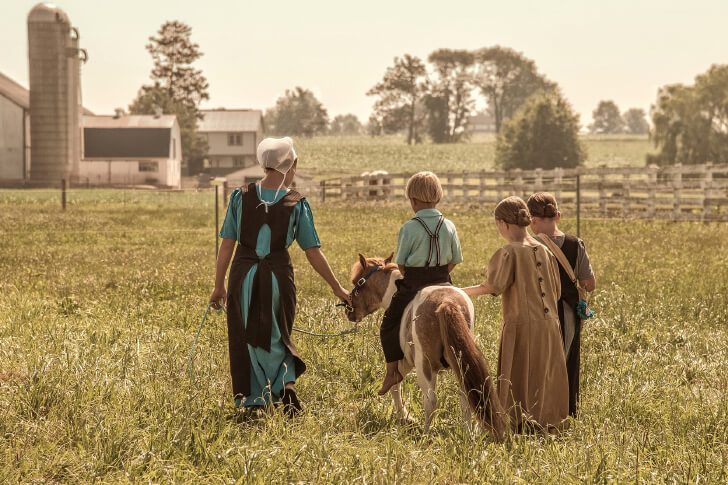
Before "farm-to-table" became the foodie buzzword of the moment, the Amish were already living it. For generations, they have been growing chemical-free produce, raising livestock the natural way, and filling their gardens with seasonal crops.
And if someone truly appreciates the goodness of it all, they’re called a "freinschmecker," a special term that describes a genuine love for authentic, homemade food. Whether it's a bowl of farm-fresh veggies or a slice of hand-baked bread, the Amish have been perfecting the art of eating well long before it became a social media hashtag. Who knew they were the original foodies?
The Amish Aren't Into Portraits
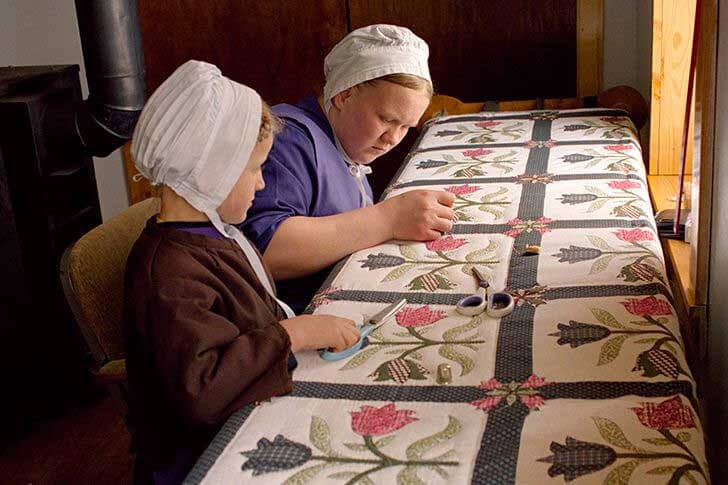
In a world full of selfies and Instagram photos, the Amish take a different approach to memories. Though they have an undeniable appreciation for the arts—music, and writing are huge in their culture—they avoid creating or displaying portraits of people. They view portraits and photographs as “graven images,” which clash with their spiritual beliefs.
Instead of capturing someone’s likeness, memories are kept alive through stories, words, and the treasured recollections of loved ones. It's a refreshing way to remember people—not in a frame on the wall, but in the heart and mind.
Skipping the Social Security Drama
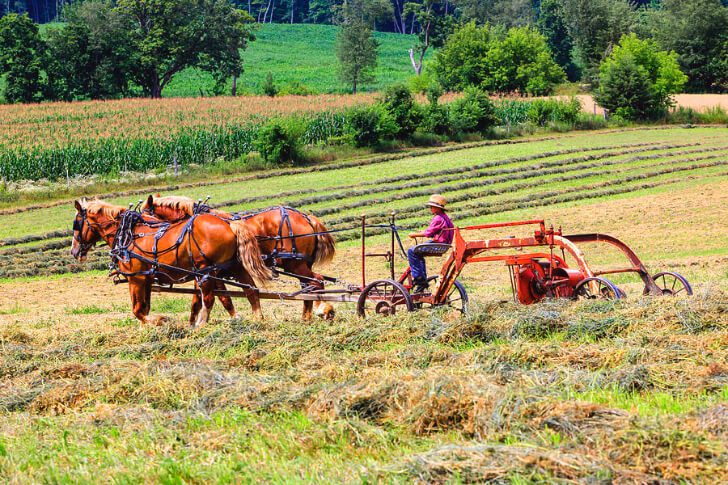
The Amish community has a pretty different take on retirement—mainly because they don’t rely on Social Security. Thanks to a special exemption, Amish workers don’t pay into the system or expect any payouts down the line. Instead, they stick to a time-honored tradition of family and community support.
It’s not about rejecting help; it’s about keeping things in-house and self-sustaining. When an Amish family member hits hard times or faces old age, it’s the close-knit network that steps in—no government checks required. It’s like their version of a 401(k), except with a lot more barn raisings and homemade pies. They’ve got it covered without bureaucracy.
Amish Wealth: No Lamborghinis, Just Lasting Legacy
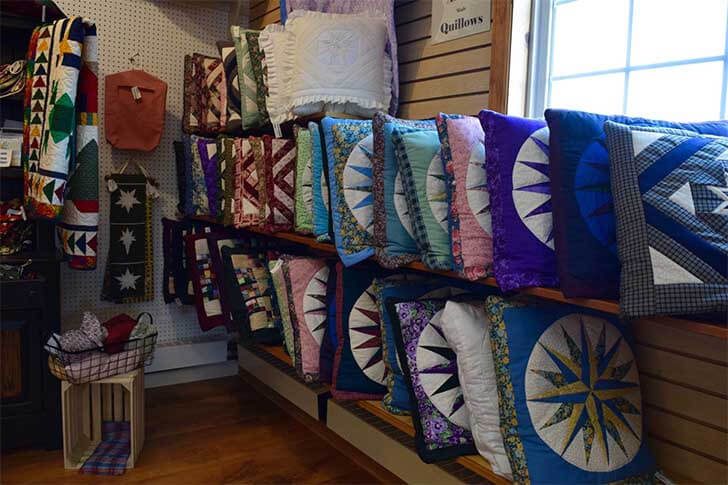
The Amish community’s approach to money could give most of us a run for our savings accounts—minus the luxury cars. They are not about flashy homes or designer wardrobes. The families within this community focus on long-term security, valuing sustainability over short-term gains.
Rather than chase the American dream of accumulating wealth, they invest in things that matter: family, community, and future generations. For the Amish, financial success isn’t about what’s in the driveway or hanging in the closet; it’s about the legacy built over time, where wealth is measured by the strength of their bonds, not the balance of their bank accounts.
Skip the Stocks, Grab a Hammer
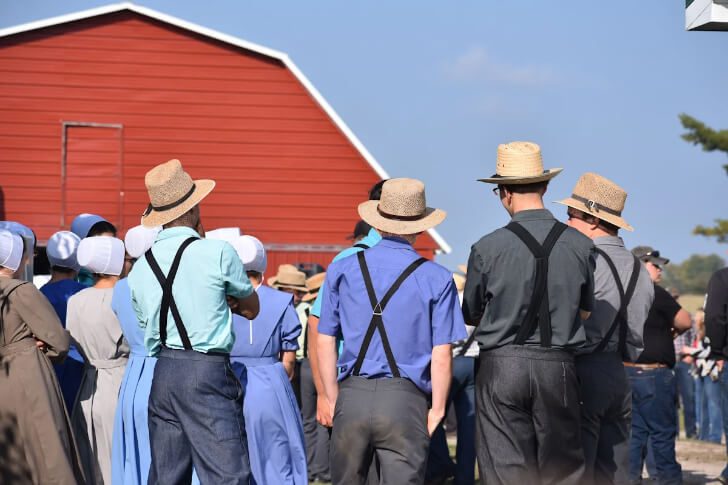
Stocks, bonds, or cryptocurrency aren't the measurement of wealth for the Amish, who take a more hands-on approach. They don't bet on the latest market trends; they pour their resources into things that hold real, lasting value—like carpentry, quilting, or farming equipment.
For them, true wealth isn't about accumulating paper assets or hoping for quick returns. It’s about owning something tangible, something that can be passed down for generations. They’re more into steady, reliable growth that keeps the family and community going. If you want investment advice from a pro, you might want to ask a quilt-maker or carpenter next time.
Practical Gifts Over Pricey Ones

Gift-giving is all about utility—especially during the wedding season, which usually occurs between late spring and early fall. Don't even think about flashy gadgets or expensive designer items; the Amish keep it real with practical gifts that actually get used.
Picture this: LED flashlights, durable tools like Dewalt flashlights, and other essentials that make life off the grid a little smoother. These aren’t gifts to show off—they’re the kind of items that fill an immediate need and hold lasting value. It's not about impressing anyone with luxury; it's about showing up with something useful that’ll really make a difference. Now, that’s how you celebrate a new chapter!
Teens Earning for the Family
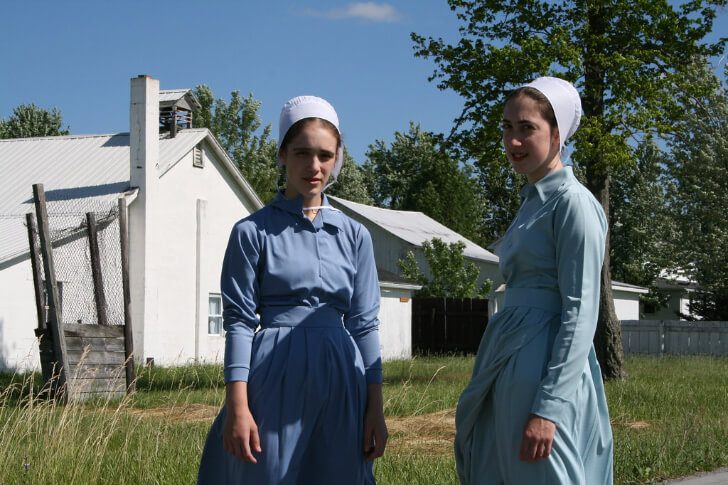
The first paycheck for Amish teens looks different than most teenagers expect. There are no splurges on fast food or new outfits. Instead, those hard-earned dollars go straight to the parents, adding to the family’s communal pot. It's a rite of passage that shows how deeply embedded the value of shared responsibility is in Amish culture.
Money isn't for individual pleasures—it's about contributing to the whole. While others might rush to spend their earnings on weekend fun, Amish teens learn the true value of teamwork and financial support from an early age. It’s all part of a life where the family unit always comes first.
No Room for Picky Eaters

Food waste is practically unheard of in this community, and it’s not just because of the homegrown produce. The real secret? Amish kids don’t get to throw a fit over dinner. There’s no “I don’t like this” or “Can I have something else?” They learn early on that what’s on the table is what’s for dinner—no exceptions.
It’s a simple yet effective rule that prevents food from going to waste and teaches kids to appreciate what they’ve got. Parents don’t have to worry about pleasing everyone’s taste buds. Instead, they focus on ensuring everyone eats and enjoys the meal together—no drama, just dinner.
Rumspringa as a Rite of Passage
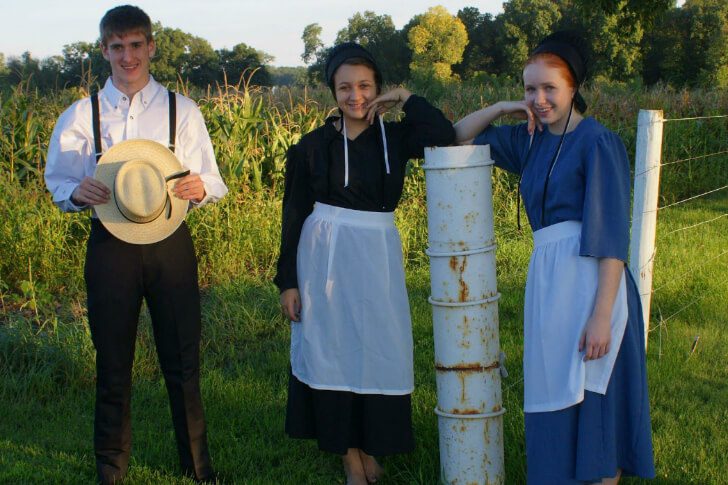
Rumspringa is like hitting the pause button on tradition and hitting the town with no rules. Between the ages of 14 and 18, they’re given the rare opportunity to explore the outside world—aka the “English life”—where things like jeans, cars, and smartphones are suddenly available. It’s not a free-for-all, though; this is more of a controlled experiment.
The idea is to give teens the chance to step away from their Amish community and see what life is like on the other side. Once the dust settles, they’re expected to make an informed choice about whether they want to stay Amish or join the modern world for good.
No SATs, Just Real-World Skills

Say goodbye to college prep, SAT stress, and those endless scholarship essays. For Amish teens, education is all about practicality. By the time they wrap up 8th grade, they’re already geared up for adulthood—no degree required. Instead of cramming for exams, Amish teens learn real-life skills, whether it’s carpentry, farming, or running a household.
Boys typically focus on a trade that’ll support them for life, while girls dive into mastering the art of homemaking. It’s a no-frills, real-world education where the diploma is optional, but the life lessons are invaluable. Who needs a cap and gown when you’re ready to take on the world?
Weddings is Where Simplicity Takes the Cake
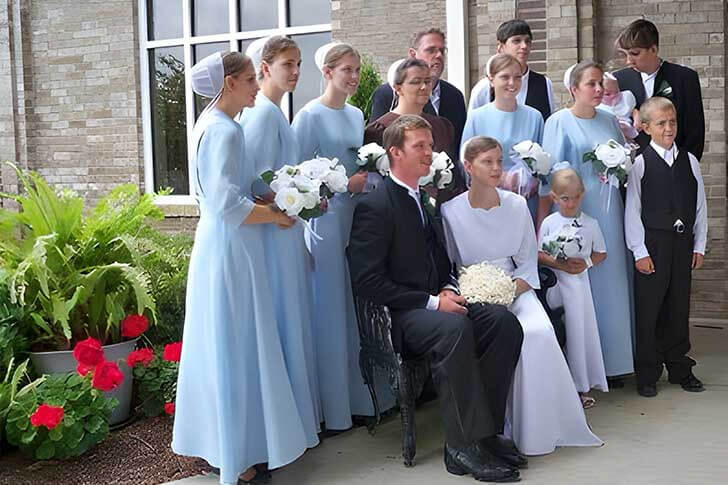
Amish weddings aren’t about bling or extravagant displays—they’re all about meaning. Forget the over-the-top white gowns and flashy diamond rings; practicality takes center stage. The bride wears a simple blue dress, one she can wear long after the wedding day—now that’s getting your money’s worth!
As for an engagement ring? It’s not part of the picture. The Amish believe symbols like that are unnecessary and too showy. These weddings are a beautiful celebration of tradition, commitment, and family, with nothing distracting from the true meaning of the day. It’s love without the frills, and somehow, it feels even more special.
Honeymoons are All About Family
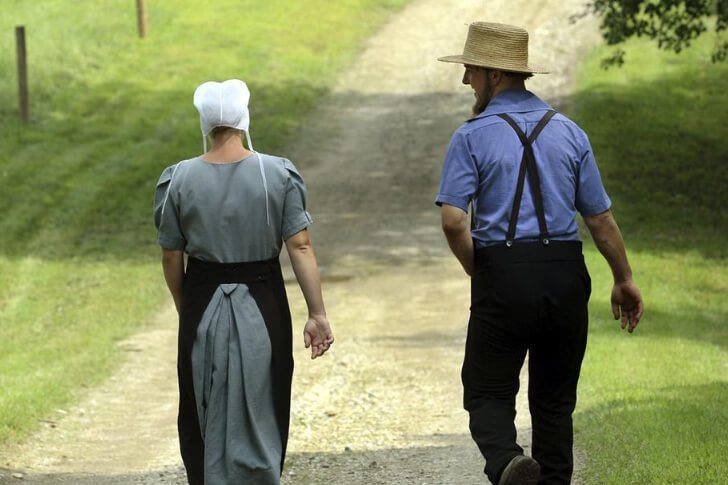
Honeymoons here are different from the typical beach getaway. Instead of jetting off to a tropical paradise, the newlyweds spend their first night at the bride’s family home. Privacy? Well, that’s not the main priority here. It takes a backseat as they settle in with loved ones close by. The morning after? There’s no lounging around with mimosas.
The newlyweds jump right into a house cleaning session, showing gratitude for their family’s hospitality. It’s all about community and giving back, proving that for the Amish, the beginning of a marriage isn’t about escaping. It’s about honoring tradition and strengthening family bonds.
Low-Cost Barn Raising

Building a barn in Amish culture is less about hiring contractors and more about community spirit. It’s not a lone project with hefty price tags; instead, it’s a full-on team effort. Neighbors show up, no invite necessary, each person bringing their skills, tools, and a good dose of enthusiasm.
The barn raising becomes an all-hands-on-deck event, where the community works side by side, making the process faster and more affordable. There's no rush to finish just for the sake of it, and everyone shares in the satisfaction of completing the job together. It’s one of the best examples of Amish teamwork.
Wellness and Pure Living
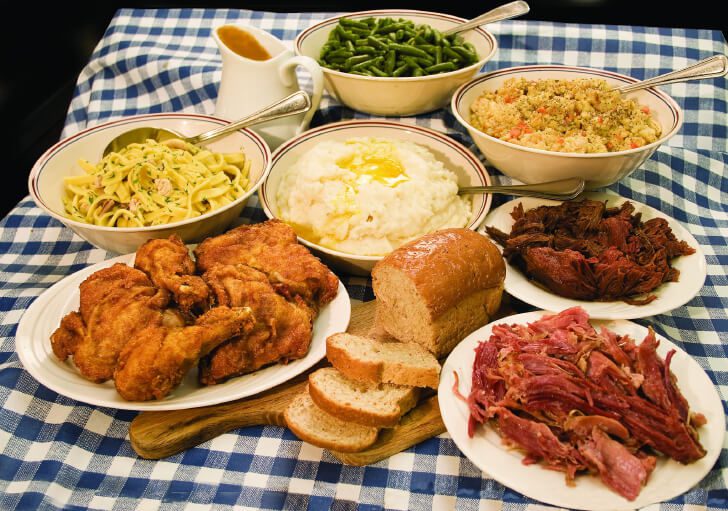
Want to know how the Amish keep their health in check while keeping their wallets full? It's all about embracing a simple, back-to-basics lifestyle. Forget fad diets or fancy gym memberships—Amish living is rooted in wholesome, natural habits. Their diet? Mostly homegrown, organic produce, with zero processed snacks to tempt them.
And don't even think about catching them with a cigarette or a glass of wine; the Amish stay alcohol- and smoke-free. It's no wonder that studies show they enjoy lower cancer rates and impressive obesity stats. They aren’t just living longer—they’re living better, and it turns out simplicity really works wonders!
Sharing the Feast
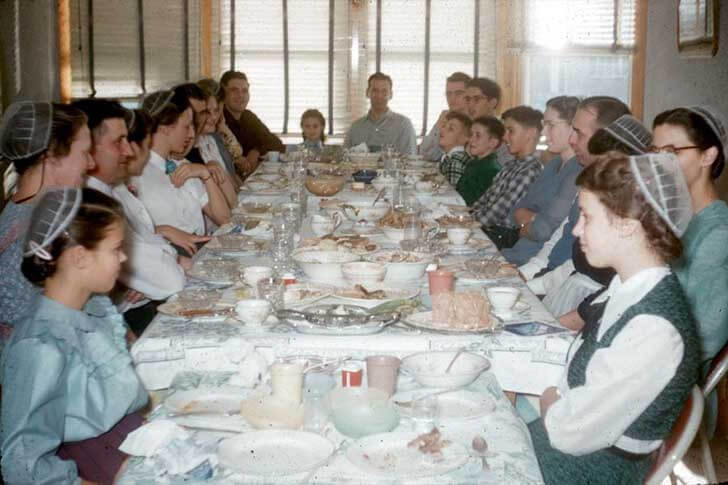
No more stressing over cooking for an army—Amish dinners are all about community. Each Sunday, families gather with friends, relatives, and church members for a potluck-style meal where everyone brings a dish. It’s the ultimate way to enjoy a big, hearty meal without the hefty grocery bill for the host.
The spread is full of homegrown vegetables, baked goods, and dishes passed down through generations, making it a true taste of tradition. It’s a low-pressure, high-reward setup as everyone gets to contribute, and no one leaves hungry. Plus, there’s always enough pie to go around—what’s not to love about that?
Cleaning Turns Into Family Fun
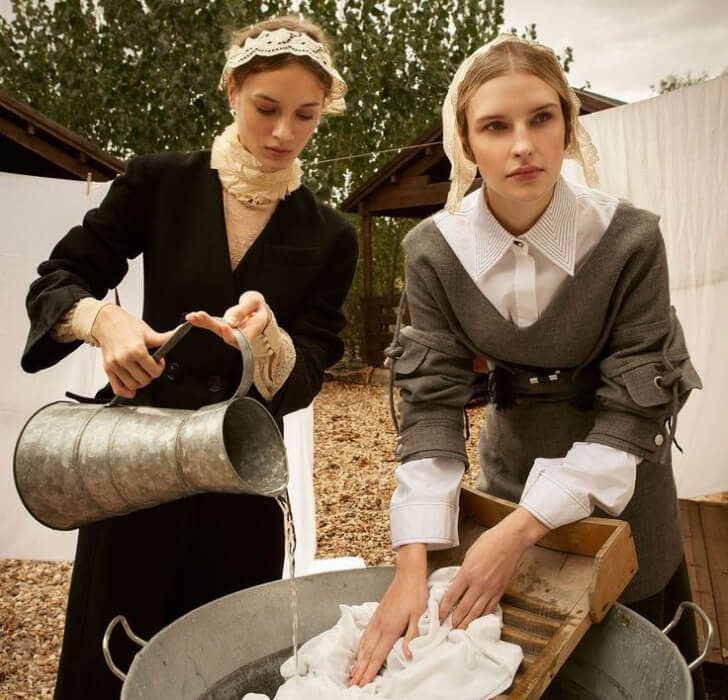
You'll notice in Amish households that cleaning is far from a solo task—it’s an all-hands-on-deck family affair. Instead of calling in outside help, everyone gets involved, from the littlest ones to the grown-ups. It’s not just about dusting or sweeping; it’s about making housework a shared experience.
The whole family works together, saving time and money while creating a stronger sense of community. It’s like a built-in bonding session, where chores become less of a burden and more of an opportunity for teamwork. And let’s be real—if everyone’s pitching in, it’s way easier to tackle those mountain-high piles of laundry.
The Right Approach to Extra Expenses
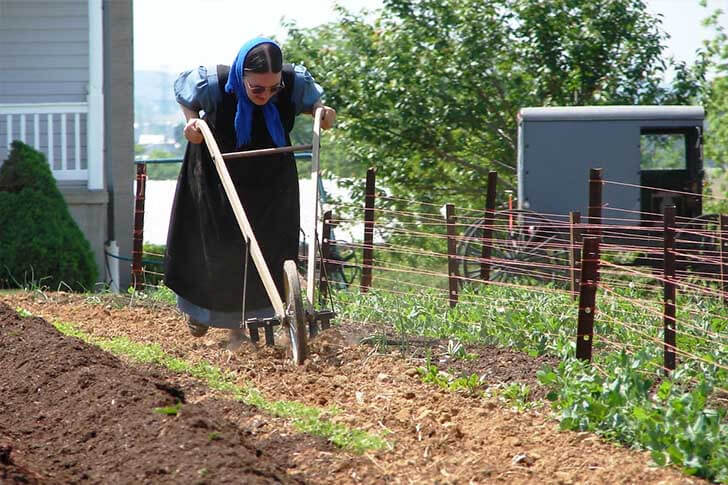
When an unexpected bill pops up, Amish families don’t reach for their credit cards—they grab their work gloves instead. Rather than leaning on debt, they get creative with how to make ends meet. Many take on extra work, whether it’s helping a neighbor with farm tasks, picking up shifts at a local business, or offering up their skills to anyone in need.
It’s all about staying self-sufficient and finding practical solutions without the pressure of plastic. No need for a second mortgage or a line of credit—just some good old-fashioned hard work and community spirit. Who knew that managing money could be this down-to-earth and stress-free?
Arranged Marriages are a No-No!

Contrary to popular belief, Amish marriages aren’t arranged by anyone other than the couple themselves. Yes, Amish individuals fall in love just like anyone else, choosing their partners after spending plenty of time courting and figuring out if they’re truly compatible.
The dating process might feel familiar—minus the flashy technology—just good old-fashioned face-to-face time and connection. However, there is one guideline that makes all the difference: to marry, both partners must be members of the Amish church. At 18, Amish youth make a life-altering decision about whether or not to be baptized into the church, and that choice shapes their marriage options.
Everybody’s “English” to Amish People
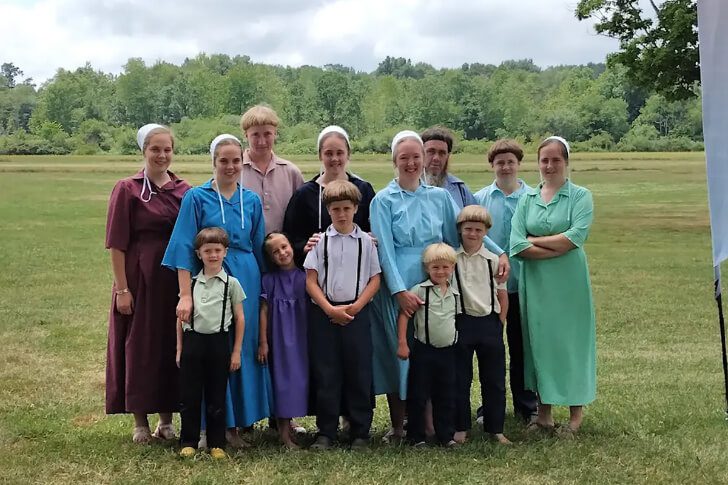
In the Amish world, anyone who isn’t Amish is referred to as “English.” No, it’s not because they’re all secretly obsessed with tea and crumpets—it’s a term that applies to anyone outside their community, regardless of where they come from. Whether you're from France, Brazil, or Zimbabwe, if you're not Amish, you're “English.”
The label actually goes way back to the early days of the Amish when the first outsiders they encountered happened to be English-speaking settlers. So, the next time you find yourself in Amish country, don’t be surprised if someone calls you “English”—it’s just their way of saying, "You're not one of us."
